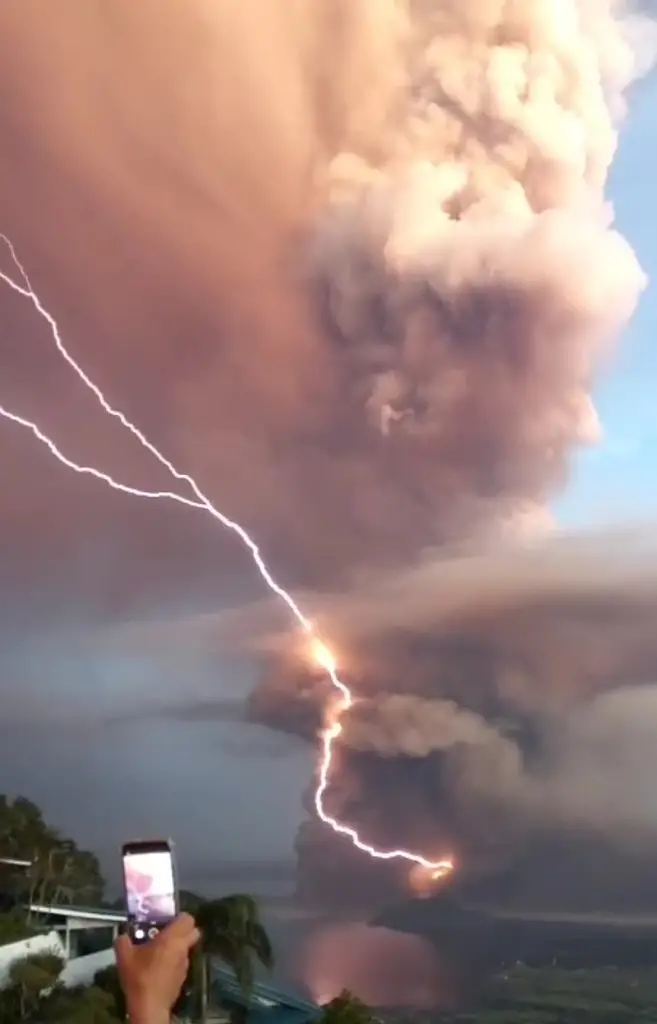Key Takeaways:
- Volcanic lightning is an electrifying phenomenon triggered by volcanic eruptions, generating electrical discharges distinct from regular thunderstorms.
- It’s aptly called a “dirty thunderstorm” because it arises from colliding volcanic ash particles and occasionally ice, generating static electricity within the volcanic plume.
- Recorded as far back as Pliny the Younger’s observations during Mount Vesuvius’s eruption in 79 AD, volcanic lightning has intrigued scientists for centuries.
- Volcanic plumes charge through ice, friction, and even radioisotopes, with their height and temperature playing crucial roles in lightning generation.
- Volcanic lightning produces intriguing by-products called “lightning-induced volcanic spherules,” which provide geological evidence of this phenomenon.
Volcanic lightning, an electrifying spectacle that occurs during volcanic eruptions, is far from your typical thunderstorm. Dubbed the “dirty thunderstorm,” this extraordinary natural phenomenon results from the collision of volcanic ash particles, and sometimes ice, within the volcanic plume. This collision generates static electricity that produces the awe-inspiring lightning. Surprisingly, volcanic lightning can manifest even before ice crystals form in the ash cloud, setting it apart from ordinary thunderstorms.
Historical records of volcanic lightning date back to Pliny the Younger, who described the eruption of Mount Vesuvius in 79 AD, noting the darkness pierced intermittently by lightning. Scientific exploration of this phenomenon began at Mount Vesuvius in the 19th century, with Professor Palmieri’s observations during multiple eruptions that often featured lightning activity.
Instances of volcanic lightning have been reported worldwide, from Alaska’s Mount Augustine and Iceland’s Eyjafjallajökull to Mount Etna in Sicily and Taal Volcano in the Philippines. Various charging mechanisms contribute to this phenomenon, including ice charging, frictional charging, and even radioactive charging from natural isotopes in ejected rock particles. The height of the ash plume and ambient temperature also influence lightning generation.
One intriguing outcome of volcanic lightning is the creation of “lightning-induced volcanic spherules,” tiny glass orbs formed during the extreme temperatures of lightning strikes. These spherules provide geological evidence of volcanic lightning, even when the lightning itself goes unseen. In essence, volcanic lightning is a captivating natural spectacle that continues to astound scientists and observers alike.
#1 1994 eruption of Mount Rinjani

#2 Volcanic Eruption of Taal Volcano, with lightning

#3 Eyjafjallajokull eruption april 17 2010

Marco Fulle
#4 Lighting seen amid the lava and ash erupting from the vent of the Eyjafjallajokull volcano in central Iceland early morning Sunday, April 18, 2010

Jon Pall Vilhelmsson
#5 Volcanic lightning over Mount Sakurajima in Japan on Dec. 17, 2020

Kyodo/via Reuters
#6 Unbelievable pic of lightning merging with erupting volcano wins ‘Perfect Moment’ photo contest

#7 Volcanic lightning, not a dirty thunderstorm, is seen above Shinmoedake peak as it erupts, between Miyazaki and Kagoshima prefectures, on January 28, 2011. (Source: Minami-Nippon Shimbun/Reuters)

#8

#9 Lightning flashes and ash and lava spew as Sakurajima volcano erupts in Japan. A new study distinguishes between lightning and smaller, more mysterious surges of electrical activity produced by the volcano.

#10



